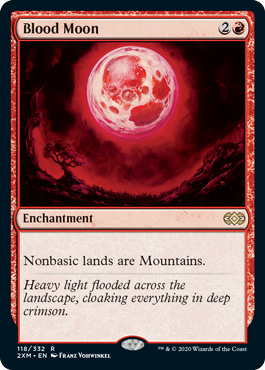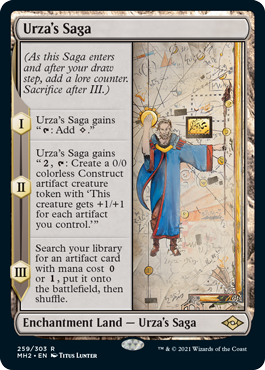Hello, and welcome back to Metagame Mentor, your weekly guide to the top decks and latest Constructed developments on the path to the Pro Tour. This past weekend featured Magic Spotlight: Secret Lair—a high-stakes, two-day open tournament where 682 competitors gathered to test their Modern mettle. There was plenty on the line, with eight Pro Tour invitations, a $50,000 prize pool, special promos, and a Secret Lair-themed prize.
We have a winner at #SpotlightSecretLair! Hunter Ovington (Broodscale Combo) defeats Andrew Bailey (Reanimator) in the finals at #SCGINDY!
— PlayMTG (@PlayMTG) June 1, 2025
Congratulations to Ovington, who not only qualified for the Pro Tour but also earned the opportunity to consult on a future Secret Lair! pic.twitter.com/KR39DSxBk9
Congratulations to Hunter Ovington, who claimed the trophy at Magic Spotlight: Secret Lair! Ovington and the rest of the Top 8 secured coveted Pro Tour invitations. As the overall champion, Ovington walked away with $10,000, a gleaming trophy, a Pro Tour invite, and the unique reward of getting to consult on a future Secret Lair drop.
Although Boros Energy was the most played deck in the field, it failed to crack the Top 8. Instead, the finals showcased a clash between Gruul Broodscale and Esper Goryo's—two relatively off-meta contenders. Their success underscores the incredible depth of Modern, where a wide range of strategies can shine. Drawing from over 20 years of cards, Modern offers intricate interactions and a wide array of competitively viable decks.
In this article, I'll highlight the breakout decks that surged to the top and highlight the archetypes with the strongest records.
The Modern Metagame and Win Rates
Modern is a nonrotating 60-card format based on expansion sets, core sets, and straight-to-Modern sets from Eighth Edition forward, save for cards on the banned list. If you're new to the format or returning after a hiatus, I recommend checking out my latest format primer, which offers an introduction to Modern's top ten deck archetypes.
To capture the latest state of the Modern metagame, the table below presents the metagame breakdown from Magic Spotlight: Secret Lair, along with the match win rates for each deck archetype (excluding mirror matches, byes, and draws). For this analysis, I set aside the archetype labels from Melee and applied my own classifications, based on the specific contents of each deck.
| Archetype | Percentage of Field | Match Win Rate |
|---|---|---|
| 1. Boros Energy | 13.6% | 53.6% ✓✓ |
| 2. Izzet Prowess | 11.6% | 46.1% |
| 3. Amulet Titan | 7.6% | 49.3% |
| 4. Eldrazi Ramp | 7.0% | 45.1% |
| 5. Domain Zoo | 5.3% | 55.7% ✓✓ |
| 6. Tameshi Belcher | 3.2% | 59.5% ✓✓ |
| 7. Orzhov Blink | 2.9% | 59.0% ✓✓ |
| 8. Esper Blink | 2.9% | 55.4% |
| 9. Ruby Storm | 2.6% | 49.7% |
| 10. Neoform | 2.5% | 44.5% |
| 11. Dimir Murktide | 2.5% | 43.3% |
| 12. Esper Goryo's | 2.1% | 63.0% ✓✓ |
| 13. Ascendancy Combo | 1.8% | 46.4% |
| 14. Azorius Affinity | 1.6% | 62.1% ✓✓ |
| 15. Living End | 1.3% | 51.7% |
| 16. Dimir Mill | 1.3% | 40.0% |
| 17. Merfolk | 1.3% | 44.1% |
| 18. Gruul Broodscale | 1.2% | 62.1% ✓✓ |
| 19. Azorius Chant | 1.2% | 47.6% |
| 20. Eldrazi Tron | 1.2% | 34.6% |
| 21. Other | 25.2% | 44.2% |
In this table, each archetype name hyperlinks to a top-performing decklist that closely reflects its aggregate build. The "Other" category collects decks with one percent metagame share or less, including Eldrazi Aggro, Dimir Oculus, Belcher Storm, Samwise Gamgee Combo, Mono-Green Broodscale, Jeskai Control, Grixis Wizards, Hollow One, Mardu Energy, Jeskai Dress Down, Hammer Time, Azorius Control, Jeskai Affinity, Jeskai Wizards, Jeskai Prowess, Esper Murktide, Mono-Black Eldrazi, Jund Sagavan, Rakdos Burn, Izzet Twin, Jeskai Energy, Four-Color Omnath, Four-Color Goryo's, Five-Color Creativity, and more.
Overall, the metagame at Magic Spotlight: Secret Lair aligned closely with expectations. Indeed, it resembled the winner's metagame from recent competitive events in May that I covered in last week's format primer. While Boros Energy continued to lose ground, it remains the most played deck in the field.
In terms of performance, seven archetypes clearly stood out: Boros Energy, Domain Zoo, Tameshi Belcher, Orzhov Blink, Esper Goryo's, Azorius Affinity, and Gruul Broodscale. As indicated by checkmarks in the table, the 95% Clopper-Pearson confidence intervals for their win rates sat entirely above the 50% line. In other words, these decks statistically overperformed, considering the available sample size. What's more, most of these decks managed to advance to the Top 8. Let's take a closer look at these seven standout contenders.
Boros Energy
Boros Energy continues to be the most played deck in Modern, making up 13.6% of the field at Magic Spotlight: Secret Lair. While no copies reached the Top 8, the deck posted an above-average performance, as it recorded a 53.6% win rate in non-mirror, non-bye, non-draw matches.
The highest-finishing Boros Energy list came from Levi Gaines, who secured 23rd place with a solid 11-4 record. His build was a largely stock version of the archetype, blending early pressure from
Over the course of the tournament, Boros Energy demonstrated favorable matchups against Dimir Murktide and Izzet Prowess, but it struggled notably against Orzhov Blink, Tameshi Belcher, and Azorius Affinity. That's a promising indicator for the health of the format: when the most played deck has a balanced slate of good and bad matchups, it reflects a metagame shaped by deck selection, matchup dynamics, and sideboard skills.
Domain Zoo
Domain Zoo had a strong showing at Magic Spotlight: Secret Lair, posting a 55.7% win rate and claiming a Top 8 spot in the hands of Ian Starkebaum. The archetype can be tailored across a spectrum from aggro to midrange, and Starkebaum opted for a build that leaned into mid-game value rather than early-game aggression. His list deliberately left out
Interestingly, the only Tarkir: Dragonstorm card to make the cut was
Orzhov Blink
Blink-based strategies made a major impact at the tournament, claiming three spots in the Top 8: two Orzhov builds and one Esper build. Among them, Orzhov Blink stood out with an impressive 59% win rate against the rest of the field.
The subtle variations among the three decks underscored the archetype's flexibility. Geoff Mullin piloted a fairly stock list to a 7th-place finish, with two main deck copies of
All in all, it was a triumphant weekend for
Tameshi Belcher
Tameshi Belcher posted an impressive 59.5% win rate against the rest of the field, dominating matchups against Boros Energy and Eldrazi Ramp in particular. Mitch Mazzei led the charge for the archetype, finishing in 11th place with a strong 12-3 record.
His list was a textbook example of the deck, featuring all the usual card choices. Its classic game plan still delivers. Ramp into
Azorius Affinity
Once upon a time, Affinity revolved around
This foundation can pivot into an Ascendancy Combo shell if supplemented with
Affinity had a solid performance. While only eleven players brought Azorius Affinity to Magic Spotlight: Secret Lair, they excelled with a stellar 62.1% win rate against the rest of the field. Burke Methena showcased the archetype's potential, piloting it all the way to the Top 8 and reaffirming its rightful place in Modern's metagame.
Esper Goryo's
Only fourteen players brought Esper Goryo's to Magic Spotlight: Secret Lair, all aiming to reanimate
Bailey's build included some notable deviations. Instead of relying on traditional hand disruption like
Gruul Broodscale
The tournament's biggest surprise—and ultimate champion—was Gruul Broodscale. The deck is named after the infinite combo of
While earlier versions of the deck were mono-green, Gruul builds with
"Splashing red is insane," Hunter Ovington said in his winner's interview. As he explained, the Broodscale combo is now the secondary game plan, while the primary game plan is to bury opponents with Fleshraker, Chrysalis, and Emrakul. "You're not all-in like Mono-Green is, where you're relying on Broodscale. You can just go big, clog up the board, and then sooner or later when they're answering your threats, you go Broodscale and kill them."
It's a demanding deck, where every line matters and sequencing is everything. But that's the beauty of Modern—when power meets precision, anything is possible.
Magic Spotlight: Secret Lair Top 8 and Other Archetypes
While I've highlighted the seven archetypes that posted significant win rates above 50%, many other strategies remain highly competitive. Modern is in an excellent place right now. Its beauty lies in its diversity—almost anything is viable in the hands of a skilled pilot. Success comes not just from the deck you choose but from how well you know it, how you anticipate the metagame, and how you navigate the ever-crucial post-board games. In short, mastery and preparation still reign supreme.
This weekend's wild, unexpected Top 8 reinforced just how wide open the format truly is. We saw Gruul Broodscale and Esper Goryo's battle it out in the finals. We saw Azorius Affinity, Domain Zoo, Izzet Prowess, and three distinct Blink variants round out the rest. That kind of variety is exciting, and it's a sign of a healthy, deep format.
If you've been keeping track, there's one Top 8 competitor I hadn't mentioned until now, but his story deserves special attention. Justin Schabel wasn't a Modern specialist. In fact, he only had four days to prepare, so he simply registered an archetype he already knew: Izzet Prowess with
A Rules Update on Sagas
If you're preparing for an upcoming Modern event, it's important to be aware of a recently announced rules update concerning Sagas. Under the old rules, a Saga that lost all of its abilities would have at least as many lore counters as its total number of chapter abilities (zero), which forced you to sacrifice it as a state-based action. This interaction meant that cards like
Starting with the release of Magic: The Gathering®—FINAL FANTASY™, that is no longer the case. The aforementioned state-based action will no longer apply to Sagas without chapter abilities. Moreover, they also stop receiving lore counters each turn. This update was made largely due to the advent of the new Saga creatures in Magic: The Gathering—FINAL FANTASY, which otherwise had unintuitive interactions with cards like
For Modern, it means
What's Next for Modern and Organized Play?
As for what comes next, the Modern RCQ season is still in full swing. If you're hoping to qualify for your Regional Championship, be sure to visit the store and event locator or your regional organizer's website to find the next event near you.
And looking further ahead across formats, MagicCon: Las Vegas is just around the corner, taking place June 20–22. It will host Pro Tour Magic: The Gathering—FINAL FANTASY, featuring the world's best players, a $500,000 prize pool, and intense high-stakes competition. The Constructed format will be Standard, so we can expect


